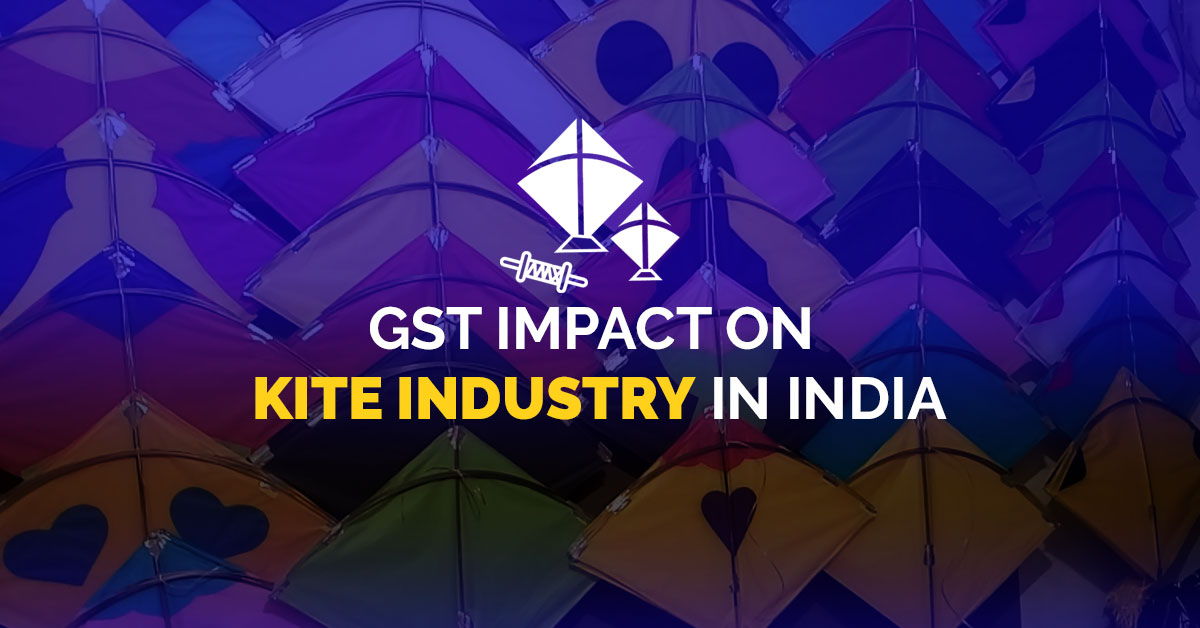The goods and services tax, which was launched earlier this year, has affected almost every service and production sector in India. While some business sectors experienced positive changes after GST, most of the industries reported a degrade in their growth because of GST implementation. One of them is the Indian kite industry.
Most of the kite businesses in India are situated in Rajasthan, Delhi, Gujarat and Uttar Pradesh states. The annual business of this sector was more than 40 crore rupees until last year. The major rise in the demand for kites is seen in the months between Diwali (October-November) and Holi (March) festivals. However, the business is seeing a decline of as much as 50 per cent this year because of the GST. A big number of kite merchants are not able to continue their businesses (shops) under GST regime.
Why the negative impact?
Here are some of the reasons why the kite industry is facing a decline, especially after the launch of GST.
- The kite business is not an organized sector in India, so the demand has decreased after GST.
- NGT (National Green Tribunal) is continuously protesting against the manufacturers of kite strings (manjha), so the workers are no longer interested in the job.
- GST has applied a separate tax of 5% on kites. There is already a tax of 5% on strings and 12% on paper. This has increased the cost of manufacturing. A bundle of kites (containing 20 kites each) was priced at Rs.120 – Rs.230 before GST, while the after GST cost of the same bundle is around Rs. 150 – Rs. 280. That’s around Rs. 2 increase in the cost of a single kite.
- Another major reason behind the decrease in demand is the early arrival of the winter season this year.
- The kite industry also suffered big losses due to demonetization in 2016.
GST Impacts on Kite Industry in Rajasthan (Jaipur)
More than 20 thousand people in Jaipur, including artisans, workers, and traders, are involved in this business, many of which are women and girls. The manufacturers reported saying that they had to pay about 15 to 20 percent higher rate for the raw material for kites than the last year’s cost. Also, there is a decline of more than 25 percent in the demand and number of orders, as compared to the previous year.
The kite dealers in Jaipur, who were buying kites from other regions including Kanpur, Rampur, Agra and Bareilly, are now unable to do so. Again because this is an unorganized industry, the transportation of readymade kites, without a GST firm number, from one state to another is almost impossible now. The same thing goes for supplies of kites from Jaipur to other states, which is also in trouble after GST. Even those kite dealers in Jaipur who have secured GST registration are unable to make interstate supplies because the recipients do not have GST numbers.
Kite Industry of Khambhat (Gujarat)
The Khambhat kite manufacturers are known for their unique kite making skills and trendy kites, but this year, these people are also facing problems like low demand and increased cost, all because of the increased tax. While the industry was still recovering from the losses caused by demonetization last year, GST has further increased their problems. Most of the traders in the region are still waiting for customers to buy their kites. Their warehouses are full of kites worth millions of rupees, but the low demand this year has increased their problems.
GST is being levied by the government on all kinds of raw materials, including the paper and kite sticks, which is the major reason behind the increase in the kite manufacturing costs. In addition to that, a 5% GST is also being levied on the sale of kites. The manufacturers are unable to recover the increased cost since this is an unorganized industry and the traders are not willing to pay GST rates when purchasing kites from manufacturers.






